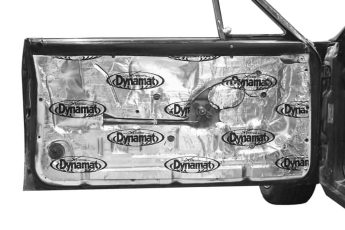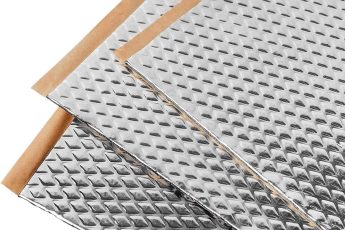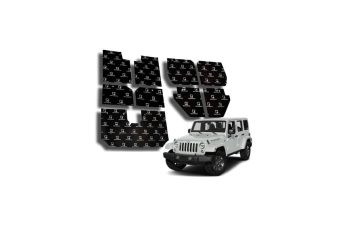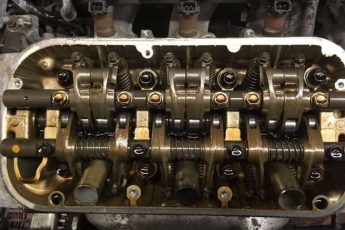When it comes to making your motorcycle helmet quieter, there are several different methods available. These include the use of earplugs, which are designed to block out sound and reduce damage to your ears. These are available in disposable and fitted forms, and you can even get custom made ones.
Air intake vents
A motorcycle helmet’s air intake vents allow for air to circulate more efficiently inside the helmet. Adding additional vents in strategic places can reduce the noise that the helmet makes. These vents can also help prevent your eye shield from fogging up while you’re riding. Vents are also an excellent way to increase the cooling power of your helmet.
Vents can also be a good idea if you’re worried about tinnitus. High wind and motorcycle engines can cause ringing in the ears, which can lead to tinnitus. Vents on your helmet can be adjustable or closed, depending on your preference.
Vents that are adjustable are a great way to reduce wind noise. They are typically located above your visor and in front of your chin. When you’re riding, try to adopt an aerodynamic riding position to reduce wind blast. By bending your arms and keeping your head in a more upright position, more air will pass over your head and into the helmet.
Vents can also improve the comfort of a helmet. For example, the Arai Signet-X is among the quietest full face helmets on the market. Its “R75 shape” philosophy is based on the idea of using continuous curves of at least 75 mm. The company claims that this helps disperse kinetic energy, minimizes helmet catching on rough surfaces, and reduces unwanted rotational forces.
Ventilation is another important feature of a motorcycle helmet. An effective ventilation system allows hot air to escape from the helmet in the back. A motorcycle helmet with air intake vents will be much quieter than one without them.
Padded wind collar
The design of the wind collar of a motorcycle helmet is vital in making it quieter. This wind collar blocks out wind noise from entering the helmet and prevents the wind from pulling the rider’s neck. This feature not only helps keep the rider comfortable but also improves audio. For best results, choose a helmet that is quieter than others.
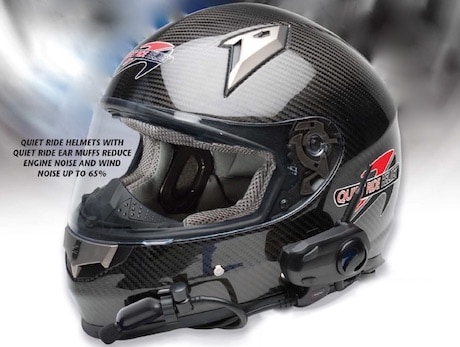
A helmet with a padded wind collar is more likely to reduce noise than a helmet without this feature. Some helmets also have an aerodynamic profile to reduce wind buffeting. Other features that make a motorcycle helmet quieter include a transitions adaptive visor, a chin curtain, and an integrated sun visor.
Padded wind collars can be a vital addition to motorcycle helmets. They reduce wind noise and can help riders focus while riding. A motorcycle helmet with this feature will not only help keep the rider calm and alert but will also protect them from hearing loss and cardiovascular effects from exposure to high decibels of road noise.
In addition to wind collars, manufacturers have developed their own versions of motorcycle helmets. If you’re looking to buy a helmet with a padded wind collar, you can combine it with a thick neck roll and windjammer. If you ride long distances, consider adding an earplug to the helmet as a safety precaution.
The wind is the main source of noise in motorcycle helmets, and when you’re cruising at high speeds, it makes the noise even louder. The wind displaced air in your helmet will produce turbulence. This will disrupt the air flow behind your helmet, so it can be difficult to adjust your helmet to reduce the noise.
Double neck roll
The double neck roll of a motorcycle helmet helps reduce wind noise. It’s a relatively lightweight addition that will help you ride quietly and comfortably. It will also provide additional neck support. You’ll also notice a difference in your helmet’s quietness if you change your riding position.
Another way to make a motorcycle helmet quieter is to add a second liner. A double liner is a better sound-absorbing material than just one. These types of liners are also more comfortable. Many motorcycle helmets have a liner made of a thick, insulating material.
The inner padding of the S2 helmet helps absorb road noise. Its lining is also extremely comfortable, making your ride on the highway more enjoyable. It also features allergen-free materials. This helps you stay healthier and keep your head and ears healthy. A double neck roll can also make a motorcycle helmet quieter.
Another way to make a motorcycle helmet quieter is to use earplugs. This is a simple, yet effective way to keep out wind noise. They are easy to use and fit most ear types. In addition, they come with a carrying case so you can keep them in a safe place. A chin curtain also increases the aerodynamic capacity of a helmet by improving the airflow around the chin area. The curtain is a tiny plastic frame that forms a path from the mouth area to the rest of the helmet.

Adding a scarf is another great way to reduce wind noise. The scarf is a good option to help block wind noise, but make sure it fits your head properly. If you’re unsure of your head size, you can consult a motorcycle shop for advice.
Balaclava
A balaclava is a simple way to make a motorcycle helmet quieter. Balaclavas work by preventing wind from entering the helmet at the bottom. It’s best to choose a balaclava that fits tightly, but still has some room for movement. Make sure it rolls down below the collar line, since this will reduce noise. It’s also helpful to wear a scarf inside the helmet, as this will prevent wind from penetrating your face.
A good balaclava will also have a breath deflector, which will keep moisture out and prevent your goggles from fogging up. It also helps keep your face, head and neck warm. It can also help protect you from debris in an accident. Plus, it’s easy to remove and wash.
While a motorcycle helmet is designed to protect you from wind noise, the wind can be quite loud while riding. To minimize wind noise, you can stuff a balaclava with memory foam or fleece. You can also insert it into the helmet’s earholes to further reduce noise. In addition to reducing wind noise, a balaclava can also keep you warm in the cold.
Another low-cost option is to wear a scarf to block the wind. This will help block noise, but it must be worn high enough to cover the bottom of the helmet. To get the best noise-reduction effect, it is important to fit your helmet correctly. A motorcycle shop can help you measure your head size.
Most full-face helmets have a chin guard that blocks out most of the wind. This is great for keeping you cool while riding, but it also reduces the noise that the helmet creates.
Scarf
A scarf is one of the best ways to make your motorcycle helmet quieter. It can make a big difference in noise reduction, especially if you ride a naked bike, which tends to have a higher riding position and no windscreen. However, the best way to keep your helmet quieter is to get a high-quality helmet with an aerodynamic shell and well-designed vent holes. In addition, a scarf or balaclava can protect you from wind and noise, making it more comfortable for you and others on the road.
While there are many methods for reducing noise, a scarf is perhaps the most simple and low-tech solution. It essentially covers the biggest opening in a helmet, the part of the neck that sticks out, which is the biggest source of noise. It makes the motorcycle helmet quieter by reducing the air flow.

Another way to make a motorcycle helmet quieter is to wear a thermal neck warmer. A thermal neck warmer is made of a double-layer fabric that covers your entire neck and face. This will prevent the howling of wind from getting inside the helmet. This will also help keep you warm, so that you don’t feel as cold while riding.
A motorcycle helmet can be noisy due to the wind and engine vibrations. While the engine noise is most noticeable before you hit the road, it isn’t as much of a problem at highway speeds. However, the noise generated by your motorcycle helmet is also caused by air turbulence. This occurs when the motorcycle moves through an air space, and the displaced air moves back into the room as you go. This disrupts the sound, which can cause hearing loss.
The wind noise inside a motorcycle helmet is usually over 90 decibels, so it is important to protect your hearing from it. A helmet with a loud dB rating can cause damage to your hearing, and prolonged exposure can even result in permanent hearing loss. Fortunately, there are several ways to reduce the noise from your motorcycle helmet.
